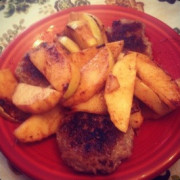If you’ve ever wondered why you want to eat well, but continue to get derailed, let me explain. I built my practice around my passion of supporting people who are stuck in this exact rut. We certainly aren’t lacking enough “how to” information in our culture. So clearly it’s not a lack of information around nutrition, even though I know it can be confusing at times for some people to understand which foods are best for their unique body.
There’s something more to the equation of healthy eating…our emotions. You may have noticed that when you’re exhausted and stressed from a day’s work, you probably aren’t very interested in a salad. Or when you have an argument with your partner, you might not want to snack on an apple. People don’t tend to choose healthy foods when they’re feeling angry, hurt or frustrated. What’s interesting to notice is how processed foods like potato chips, mac & cheese and cookies shift your attention away from the uncomfortable feeling. Most people are afraid to feel their emotions so they distract themselves with habits such as overworking, over scheduling, over achieving or getting mindlessly involved in emotional drama, Facebook or their phone.
Not only is our quality of food negatively impacted by our emotions, but so is the quantity of food we consume. Eating too much food can dampen your current negative emotion, only to leave you with a new disappointing emotion such as shame or guilt. Again, people often eat too much so they don’t have to feel their emotions or subtle beliefs about themselves or be present with their current life situation. Other people may avoid emotions in other ways such as restricting food and not allowing themselves to eat when they’re hungry. Most people aren’t aware of their emotional avoidance until they start to observe their patterns. I believe most people eat unhealthy not because they don’t know how to eat healthy, but because they are avoiding negative thoughts/feelings/beliefs/fears or traumas based in the past. Science has recently discovered these painful memories and beliefs are stored in the body.
Emotional pain and negative self beliefs get formed when we experience difficult circumstances or events which can be called trauma. Everyone has experienced trauma to varying degrees. Trauma is when something difficult happens to you and it doesn’t get fully expressed or emotionally resolved so it’s stored in the body. It can be an ongoing situation or a one-time event. Let me share a couple of examples of what trauma can look like so you can recognize it in your own life. It does not need to feel like a significant event to you for the negative energy to be stored in your body.
- An ongoing experience of parents being distracted and not present with you
- Kids making fun of you at school
- Transitions of any kind such as changing schools, getting laid off or fired, moving to a new city/state/country
- Getting divorced or parents divorcing
- Growing up in poverty or experiencing financial insecurity
- Being criticized
- A parent making negative comments about you either overtly or subtly
- Feeling like you don’t fit in with your peers
- Not getting your emotional or physical needs met
- Not being able to fully express your feelings in childhood or adulthood
- Any physical, sexual or emotional abuse
- Making a mistake and getting in trouble for it (or not)
- Experiencing a break up with a partner
- Losing a friend
- Witnessing violence
- Physical pain or injury
- Surgery
- Losing a loved one
- Being separated from someone you love
I could list many more examples, but hopefully you understand it doesn’t have to be something significant for a subtle, negative thought, feeling, belief or fear to form and adversely impact your nervous system. It’s important to address past trauma so it becomes easier to have a healthy relationship with yourself and food. When you begin to experience more ease, you can choose foods that feel right for your body versus eating (or not eating) to cover up uncomfortable emotions like shame, fear or anger. Eating well should ideally feel easy and natural.
I am passionate about helping men and women find a way off of the roller coaster ride of dieting and restricting. That’s why I’m very excited to offer Quantum Neurological Reset Therapy in my practice. Science shows that when difficult things happen in our life, negative energy patterns can be stored in the nervous system and brain, creating fear, anxiety, sadness and the inability to move forward. QNRT is a science-based modality for bringing balance to the nervous system and brain.
QNRT resets are an option to request with any session you schedule with me. I’ve been delighted with the positive results I’ve seen in myself and in my clients who have utilized this technique. It has made it easier for them to apply the changes I recommend for healthy eating and living. Something interesting to note is when you experience traumatic stress in your life, it covers up your gifts such as freely expressing love, having a witty sense of humor or passionately pursuing a creative talent.
I hope this article gives you hope that you can change the way you eat and care for yourself. The reason you haven’t been able to eat well is not because you lack willpower or discipline, it may be because you have emotional pain stored in your body that you’ve been working hard to avoid. QNRT is an effective, easy and results-oriented way to support your health. You will still need to follow through on the action steps I recommend to improve your health, but it won’t feel as challenging. QNRT, along with the support of a therapist and holistic nutrition counselor, is a powerful combination to help you heal, grow and evolve your body, mind and spirit.








